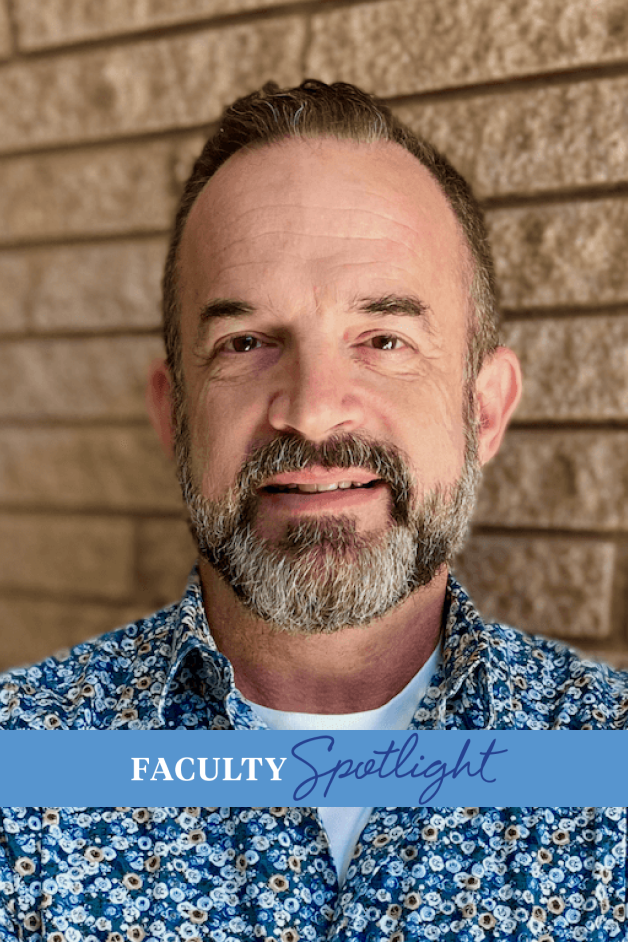Professor David Smith Connects His Past and Present for the Creative Coding for App Development Course
SMU Professor David Smith is helping creative coders develop the skills and knowledge they need for app development.

The domain of creative technology stands for more than creative and technical innovations and expressions. This field of study is actively telling the story of human advancement, with a constant reminder to learn from the past to make the future better. That is also the story of SMU Professor David Smith, who passionately connects with his past life experience to bring a sense of totality and inspiration for his current and future endeavors.
“Approaching the world as a student is a great way to keep your ego in check,” says Smith. “The more you learn, the more you realize you don’t know. This approach has helped me overcome many challenges.”
Smith is a visual artist and creative coder with more than 20 years of service in the military. His professional work explores the space between fine art and computer coding, in search of an art that is the hybrid of historical tradition and future technology with the concept of “post-computational” as a cornerstone of his work. Smith is a professor with SMU Meadows School of the Arts who teaches the Creative Coding for Application Development course in SMU’s Master of Arts in Creative Technology program.
RECONNECTING WITH ONESELF
Smith’s background and career experience doesn’t fit the typical mold of a creative technology professional. He completed a bachelor’s degree in Aeronautical Science from Embry-Riddle Aeronautical University in 1992 and was commissioned as a Second Lieutenant in the U.S. Army where he flew Medevac helicopters for nearly nine years before transitioning to the U.S. Coast Guard (USCG) in 2002. In 2014, he retired from the military as a Lieutenant Commander.
Through these experiences, Smith developed a passion for teaching that he would apply to his post-military life.
“Cutting my teeth as a flight instructor at the USCG Aviation Training Center, where resources were limited and mistakes were costly, allowed me to hone my chops as a teacher. And I completed a graduate degree in Aeronautical Science with a concentration in Human Factors and Aviation Adult Education. All of this cemented my passion for teaching others.”
Along with his passion for teaching, Smith says he holds two constant lifelong passions – computer programming and art. In a journey to connect with the person he was before his time in military aviation, he completed two bachelor’s degrees from SMU – a Bachelor of Fine Arts in Studio Art and a Bachelor of Arts in Creative Computation. Making the transition from student to professor in a hybrid field makes Smith eager to share his unique perspective with students.
“I am thrilled and delighted to have the opportunity to teach at this level. I am still a proponent of formal education, and the theory piece of computer science is critical (algorithms, architecture, history, etc.), but a person can do well simply by being able to create successful projects with computer code. There is an endless horizon of things to learn. Nobody knows everything about it. Even the most accomplished professor can be challenged by knowledge or skills that are second nature to a 15-year-old programmer. So, it is wonderful to have the chance to teach at this level, but I will never let it go to my head - it is an opportunity and I owe it to my students to thoroughly research the topics I teach and separate facts from opinion, bias or baloney.”
GUIDING THE WAY
Smith’s experience and perspective gained through his life will be leveraged in a positive way for students in his Creative Coding for Application Development course. He hopes to instill wisdom that goes beyond the practical, hands-on skills from the curriculum so they can truly make a difference in their lives.
“An impressive portfolio of creative computing projects will get you the interview but being able to tie knowledge of theory with practical programming skills and ‘soft skills’ will land you the job. All are important. So, learn theory, practice programming, and get comfortable with meeting people, get comfortable with talking and teaching, and practice collaboration and group-work. Most tech jobs involve teamwork and group projects. Try describing the code from your latest project to somebody who knows nothing about computers. Writing code is one thing, explaining code is another, and teaching it is something more.”
As for the field of creative technology and creative coding itself, Smith is excited for the new innovations of tomorrow, but understands the importance of drawing from past experiences in the present to help form a better future.
“This landscape is always growing. As the evolution of technology changes, inspiring people will always find new ways of expressing creativity within its new boundaries. Blockchain, AI, and robotics (including drones) are the future. They are exciting but they have their downside, as many will point out. All of that said, we cannot forget the past because of the mistakes humanity has made along the way. We have to look back and learn, look at the future and dream, and look closest at the present and how our actions affect others in the world. I hope technology continues to evolve in a benevolent way that benefits humanity. I hope art will be a unifying force in our often-times overly divisive world. I am an optimist, and I am excited to see what comes next.”
The SMU Meadows School of the Arts M.A. in Creative Technology graduate program is designed to help prepare both creative and technical-oriented individuals to combine skill sets across interactive mediums, design, programming, blockchain and generative AI applications. To learn more about SMU’s M.A. in Creative Technology program, visit our program page.